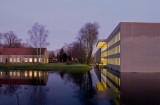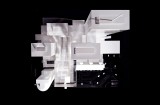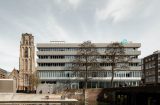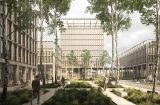The depot of the Royal Museum of Fine Arts has been officially opened
Last Monday the depot was officially opened by the Flemish Minister for Environment, Nature and Culture in Belgium, Joke Schauvliege together with Dikkie Scipio, partner and project leader.

Phase one consisted of removing a post Second World War nuclear bunker from the heart of the museum, restoring the museum to its original late 19th century design by Jacob Winders and Frans van Dijck, and accommodating a state of the art storage space.
Once the bunker had been removed, the newly freed space left way to the original spacious arches that now house the KMSKA’s extensive collection that includes major works by Belgium Artists from the 14th to the 20th century, from Van Eyck to Rubens to Magritte. The completion of this space marks the beginning of the second phase; an extensive renovation and extension also to be carried out by Claus en Kaan Architecten. The renovation will go forward without removing the precious art works thanks to this first phase.
The newly refurbished museum and its extension will open to the public in 2017. The 40% extra surface area will be obtained by constructing a modern ‘vertical museum’ within the museums existing large interior patios without altering the neoclassical landmark from the exterior.
According to architect Dikkie Scipio, the envisaged ‘vertical museum’ will be ‘suitable for both modest and monumental presentations. It will provide an equally bold setting as the 19th Century building, but without the architecture imposing itself on the art’.
It will be possible for the public to visit the depot on Saturday April 6th 2013, before the second stage of renovations gets underway.
For more images check our KAAN work section: Royal Museum of Fine Arts.






